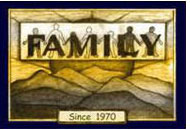A safety plan allows an individual in an abusive relationship to leave home in the safest possible way and with resources to make the transition easier. Shelters and crisis counselors have been urging safety plans for years. Police departments, victim services, hospitals, and courts have adopted this strategy. Safety plans should be individualized, taking account of age, marital status, involvement of children, geographic location, and resources available, among other things, but they still contain common elements.
When creating a safety plan . . .
- Think about all possible escape routes: Doors, first-floor windows, basement exits, elevators, stairwells. (Rehearse if possible. Avoid arguments with the abuser in areas with potential weapons such as the kitchen or garage, or in small spaces without access to an outside door.
- Choose a place to go (to the home of a friend or relative) who will offer unconditional support. Or go to a motel or hotel, hospital, police station, or to a shelter. Most important, it should be somewhere you will feel safe.
- When fleeing, use cash. Locations where you have used credit or debit (ATM) cards can be easily traced.
- Try to start an individual savings account. Have statements sent to a trusted relative or friend.
- Know the telephone number of the domestic violence hotline. Contact it for information on resources and legal rights.
- Review your safety plan monthly.
- If you are in immediate physical danger, call 911.
- If possible, don’t use your cell phone. Detailed bills may reveal your or the shelter’s phone number.
- Keep an emergency kit in an old purse or container that can be easily and quickly grabbed when you leave. It should contain:
- House and car keys
- Social security cards
- Driver’s license
- Birth, marriage/divorce certificates
- School records
- Immunization and medical records
- Money, checkbook
- Bank books and credit cards
